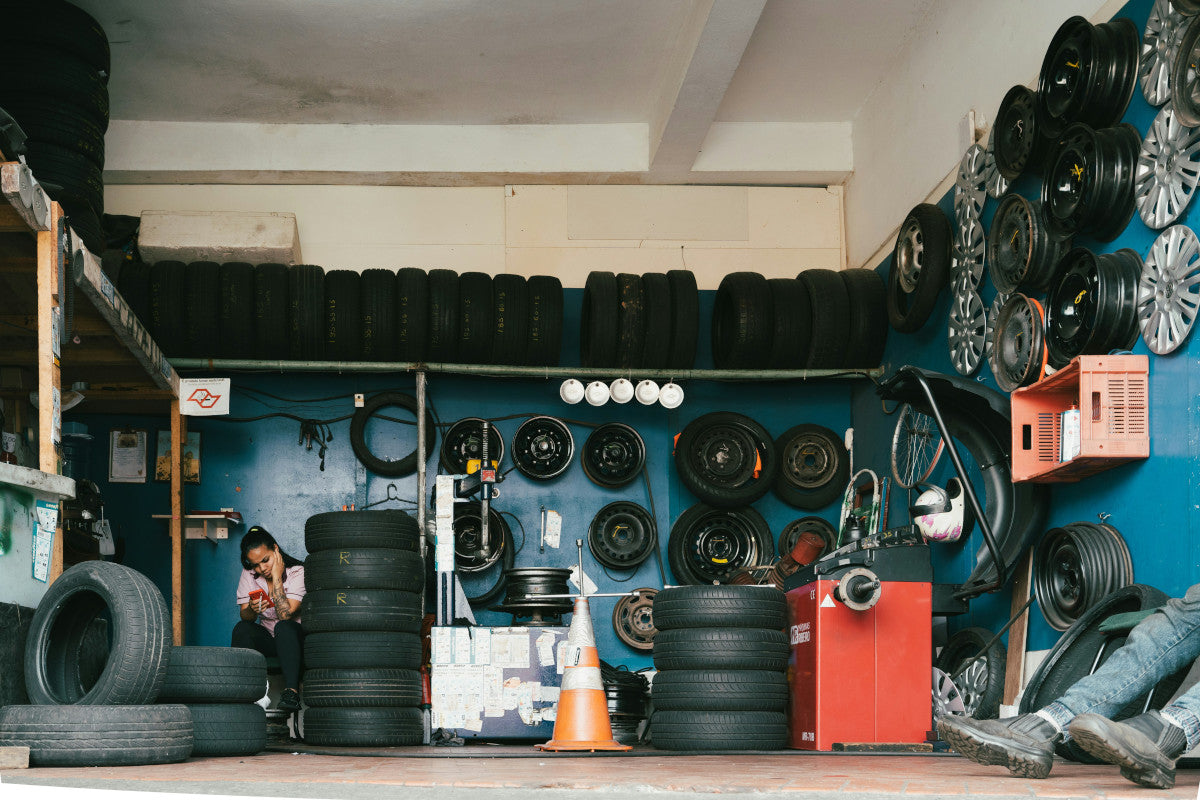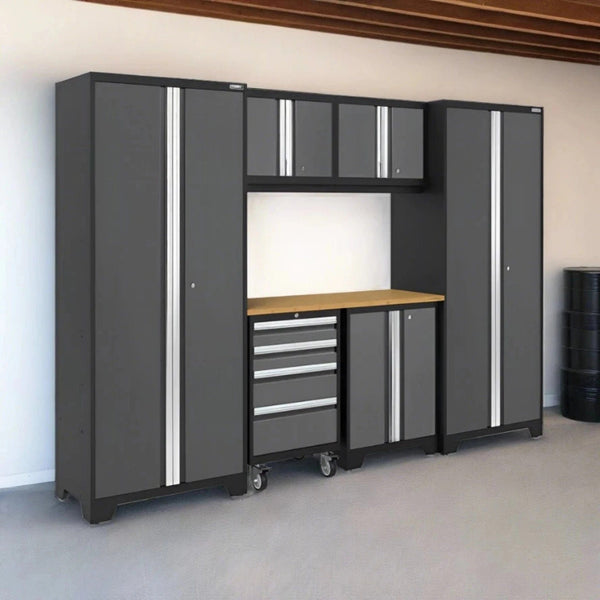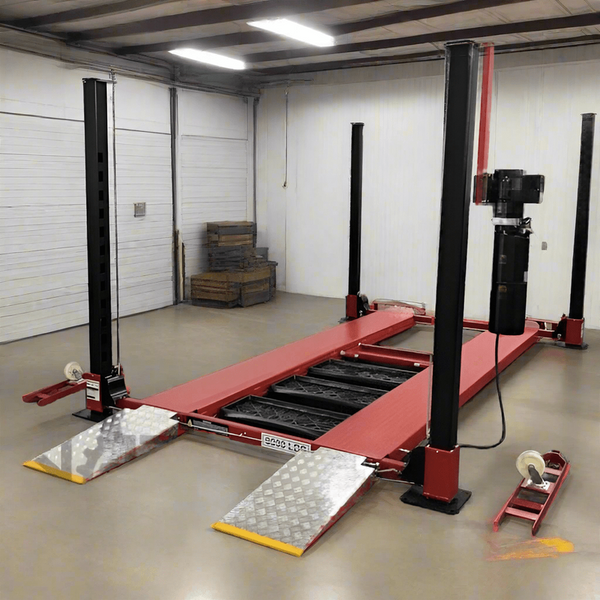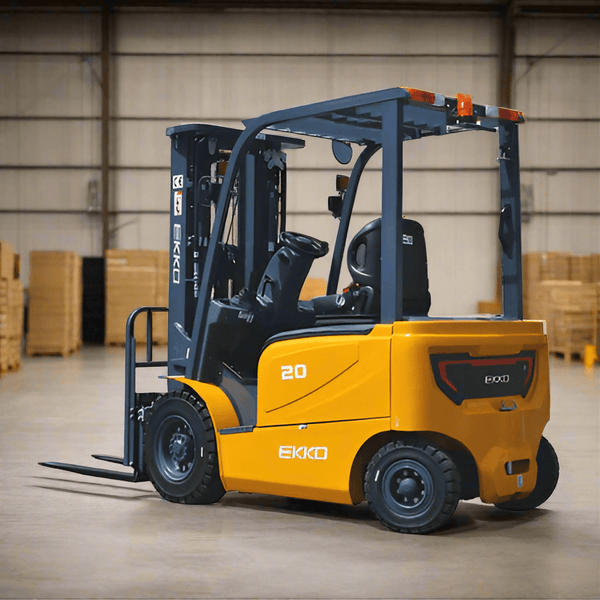
How Often Wheel Alignment and Balancing Are Needed
Neglecting wheel alignment and balancing might not seem urgent, but it leads to uneven tire wear, steering issues, vibration, and costly suspension damage over time. Both services keep vehicles safe, smooth, and efficient. But how often should you do wheel alignment and balancing? Here are some general rules of thumb:
- Wheel balancing: Every 5,000-6,000 miles or whenever new tires are installed.
- Wheel alignment: Every 6-12 months or after hitting potholes, curbs, or noticing handling changes.
How often wheel alignment and balancing are needed depends on driving conditions, vehicle type, and habits. Someone who drives a lot on rough roads, tows heavy loads, or uses high-performance tires will need service much sooner than the average person.
If you’re a shop looking to expand services, My Garage Supplies carries the professional-grade wheel alignment machines and wheel balancer machines you need to deliver precise, repeatable results. Invest in your shop’s success today!
What’s the Purpose of Wheel Alignment?
Wheel alignment confirms a vehicle’s wheels are positioned correctly in relation to each other and the road. Technicians adjust three key angles to restore the vehicle manufacturer’s recommended geometry:
- Camber
- Caster
- Toe
All three angles have to be properly set for the tires to make optimal, even contact with the road. This improves handling, stability, and fuel efficiency. Alignment keeps the steering wheel centered, helps tires wear evenly, and prevents the car from drifting to one side while driving.
Even small alignment issues can affect safety and tire lifespan. So what are the signs a vehicle is due for wheel alignment? These are what you should advise your customers to look out for:
- The steering wheel pulls left or right when driving straight.
- Uneven or rapid tire wear, especially on inner or outer edges.
- The steering wheel feels off-center even when the vehicle drives straight.
- Squealing tires or a “loose” feeling in the steering.
Performing regular alignments helps protect suspension components, maintains precise steering response, and saves drivers money on premature tire replacements.
What’s the Purpose of Wheel Balancing?
The other half of the wheel balancing vs alignment comparison is just as significant. Wheel balancing corrects uneven weight distribution in a tire and wheel assembly. One side is heavier when a wheel isn’t perfectly balanced, and this causes it to wobble or vibrate as it spins.
During balancing, a technician mounts the wheel on a specialized machine that detects heavy and light spots. They’ll then attach small counterweights to the rim for smooth, even rotation. This improves ride comfort and protects suspension components from excessive wear.
Like we said from the start, most experts recommend balancing wheels every 5,000-6,000 miles or during each tire rotation. But customers can also pay attention to symptoms such as:
- Vibration or shaking in the steering wheel, especially at highway speeds.
- Uneven tread wear or cupping patterns on tires.
- Noisy ride or excessive road feedback.
- Recent tire change or rotation without balancing
Regular wheel balancing reduces vibration, extends tire life, and maintains a smoother, safer driving experience. But what’s “on time” for one customer will likely be far overdue for another, and then maybe even premature for the next.
There are a lot of moving pieces influencing how often wheel alignment and balancing are necessary, so let’s take a closer look at the ideal frequencies below.
How Often Should You Do Wheel Alignment and Balancing?
Keeping wheel alignment and balancing on schedule protects more than just tires. It also keeps steering, suspension, and passenger comfort dialed in. Both services should be treated as routine maintenance, not reactive repairs.
So, how often should you do wheel balancing and alignment? These are the intervals most shops recommend:
- Wheel balancing: Every 5,000-6,000 miles, or at each tire rotation.
- Wheel alignment: Every 6-12 months, or every 6,000-10,000 miles, depending on driving habits and road conditions.
- Immediate alignment check: After noticeable handling changes, tire replacements, or suspension work.
- Immediate balancing check: Whenever you feel vibration, notice irregular wear, or install new tires.
While these intervals work for most vehicles, it’s best to treat them as guidelines. Pay attention to steering feel, tire condition, and feedback through the wheel. Remember, early detection of imbalance or misalignment often prevents expensive repairs later!
Factors That Affect Frequency
There’s no one-size-fits-all answer on how often wheel alignment and balancing are necessary, because no two cars are driven in the exact same way or in the same environment. Here are some of the factors influencing the ideal interval for alignment/balancing:
- Road quality: Rough or uneven pavement, potholes, or gravel roads quickly knock alignment out of spec.
- Driving habits: Aggressive cornering, sudden braking, or frequent curb contact accelerate misalignment.
- Tire type and size: Performance and low-profile tires are more sensitive to imbalance and require more frequent checks.
- Vehicle load: Towing, carrying heavy equipment, or consistently driving with uneven weight distribution.
- Suspension wear: Worn bushings, shocks, or control arms can cause recurring alignment issues if not repaired.
- Climate and seasonal changes: Cold weather and temperature swings can alter tire pressure and balance over time.
Understanding these variables helps drivers (AND technicians) set more personalized maintenance schedules based on real-world conditions rather than fixed mileage.
When to Bundle Services Together
You came here curious about how often wheel alignment and balancing are needed - but they’re not always done at the same time. That said, it definitely makes sense to bundle them in some cases.
Combining wheel alignment and balancing during tire rotations, seasonal changeovers, or new tire installation saves time and ensures full optimization. Doing both together improves tire longevity and helps keep performance even across all four corners of the vehicle.
From your shop’s perspective, this approach also simplifies workflow and provides customers with a more complete maintenance solution. It’s another way to increase your bottom line as well.
How to Communicate Timing to Customers
Carity builds trust for repair shops and tire service centers. So instead of giving generic recommendations on how often wheel alignment and balancing are needed, reference measurable signs - like uneven tread wear or steering vibration. You can tie them to the specific intervals mentioned above.
We’ve seen some shops offer a complimentary alignment or balance check with major tire or suspension services, and record mileage-based reminders in your shop management system.
You should reinforce the idea that alignment and balancing are ongoing precision checks, not one-time procedures. Customers need to see them as preventive care for protecting ride quality, tire life, and fuel economy. This will keep them returning on schedule.
Set Yourself Up For Success With the Best Wheel Alignment and Balancing Equipment
My Garage Supplies helps professional shops and serious enthusiasts find the right tools to perform precision wheel services with confidence. Whether you’re looking for the best wheel balancer or the best wheel alignment machine, your search ends here. We even have a tire changer and balancer combo and car lift for garage collection!
Our lineup includes trusted brands like Atlas, Katool, and AMGO, offering everything from compact digital balancers for smaller garages to advanced 3D alignment systems for high-volume operations. Every machine we carry is built for repeatable results, fast setup times, and user-friendly operation to help your shop improve efficiency and customer satisfaction.
Your purchase is also backed by expert guidance, competitive pricing, and hassle-free financing. We source exclusively from US-based suppliers and provide unparalleled customer support to keep your investment performing year after year.
Shop now or get in touch for a personalized recommendation and start expanding your services, or improving on what you already do!
Parting Thoughts on How Often Wheel Alignment and Balancing Are Needed
While there’s no one-size-fits-all answer on how often wheel alignment and balancing are needed, we hope this guide has left you feeling clear on the ideal intervals for most vehicles.
Remember to advise your customers that staying on top of wheel alignment and balancing isn’t optional. It’s essential for protecting tires, improving fuel efficiency, and keeping vehicles safe on the road.
At this point, all that’s left to do is upgrade your shop with professional tools from My Garage Supplies. Explore our selection and find the equipment that fits your workflow best!



